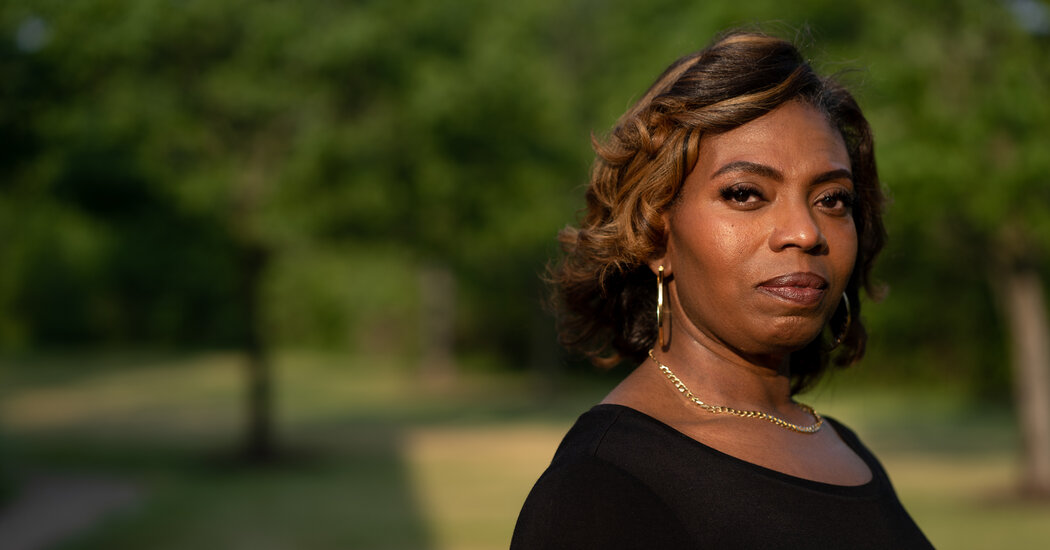In a Roman Tomb, ‘Dead Nails’ Reveal an Occult Practice
When it came to the treatment of diseases, the ancient Romans had no shortage of magical remedies, several of which involved iron nails. To cure epilepsy, the first-century historian Pliny the Elder advised driving a nail into the ground at the spot where the afflicted person’s head lay at the start of the seizure. The Romans hammered nails into doors to avert plagues and pounded coffin nails into thresholds to keep nightmares at bay. Nails from tombs and crucifixions were sometimes even worn around the neck as talismans against fevers, malaria and evil spells.
Recently, archaeologists excavated an unusual set of talismanic nails from a mountaintop necropolis on the outskirts of Sagalassos in southwestern Turkey. In an early Roman imperial tomb, 41 broken nails were found scattered among the cremated remains of an adult male who had lived in the second century A.D. and was buried in situ. Twenty-five of the nails were headless and deliberately bent at right angles; the others were complete roundheaded nails with the shanks twisted multiple times. The unusual funerary practice is the subject of a new study published in the journal Antiquity.
“The nails were not used in the construction of the pyre, and had no practical purpose,” said Johan Claeys, an archaeologist at Catholic University Leuven and the lead author of the paper. “They would have been valuable enough to be recovered if still serviceable. But they were dead nails, and the way they were distributed around the perimeter of the tomb suggests that the placement was purposeful.” By “dead nails,” he meant that they had been believed to possess occult power.
At the time, the ashes and unburned remnants of cremated bodies were commonly put in an urn and buried in a grave or placed in a mausoleum. In this case, the pyre was carefully sealed beneath a raft of two dozen bricks, arranged in four rows. The undersides of the bricks were discolored, indicating that they had been set atop the still-smoldering embers. The bricks were then slathered with slaked lime.
“This wasn’t the thin, temporary layer normally used to cover the skeletal remains before they were recovered for burial,” Dr. Claeys said. “This lime was thick and secured the remains as much as a solid coffin would have.” Lime, he said, was seldom applied during Roman-era interments. Indeed, of the 180 or so tombs that his team examined at the cemetery, this was the only one that had been limed.
Each of these three features — the nails, the bricks and the lime — has been found in other graves in the ancient Mediterranean, but this was the first time they had been seen together, Dr. Claeys said. This strongly implied the use of protective charms to keep the “restless dead” from interfering with the living, he said.
“Whether or not the cause of the man’s death was traumatic, mysterious or the result of a contagious illness or punishment, it appears to have left the mourners fearful of his return,” he said. “We are witnessing here at least three deviant interventions that each in and of themselves can be understood as means to pin the deceased to his final resting position. The combination swings the pendulum firmly toward safeguarding the living from the dead.”
The new study provided significant evidence that “protective magic” was used in Imperial Rome necropoli, said Silvia Alfayé, a professor of ancient history at the University of Zaragoza, Spain, who was not involved in the project. “The Sagalassos cremation tells us a personal but also social story of care, hope, contempt, respect, grief and fear facing loss,” she said. “It reveals the choice of magic as the most suitable ritual technology to manage death anxiety and phantom menaces.”
Yo, Hadrian
Sagalassos was built on the slopes of the Taurus mountain range, about 5,000 feet above sea level, in the late fifth century B.C., when the region was part of the Achaemenid Empire. Captured in 333 B.C. by Alexander the Great on his march through coastal Anatolia, Sagalassos was loosely governed from afar, if at all, by members of his ruling clique and their descendants: Antigonus the One-Eyed, possibly Lysimachus of Thrace, and the Seleucids of Syria, who are credited with urbanizing the area.
By the second century B.C., Sagalassos had become a city-state of the Hellenistic Attalid Kingdom. With the death of King Attalus III in 133 B.C., the settlement was bestowed on the Roman Republic and, a century later, incorporated into the Empire. The bustling metropolis was later favored by the emperor Hadrian (117 A.D. to 138 A.D.), who named it the regional center of the imperial cult.
In late antiquity, Sagalassos, though still dynamic and resilient, faded in importance. From the sixth century A.D. on, it suffered an earthquake, a recession, epidemics and an invasion until it was abandoned in the 13th century. Largely protected from looting and vandalism by its extreme isolation, Sagalassos today remains remarkably well-preserved, with a library, an odeon and outdoor theater, two large bath complexes, a 60-room mansion, a monumental fountain and colossal statues of Hadrian, fellow emperor Septimius Severus and empress Faustina the Elder.
Archaeologists from Catholic University have been systematically excavating the area around Sagalassos since 1990. In 2011, they began a fresh exploration of the city’s northeastern edge, a kind of premature suburban sprawl originally dedicated to agricultural terracing that had been converted for funerary and artisanal purposes. The dig uncovered relics, intact burials and traces of cremation pyres spanning six centuries.
“As Sagalassos belonged to the Greek-speaking parts of the Roman Empire, many of their funerary practices are more Greek in nature than Roman,” said Sam Cleymans, an anthropologist at the Gallo-Roman Museum in Belgium who also worked on the new paper.
The so-called dead nails turned up in 2012. Dr. Cleymans, then a student doing fieldwork at the site, remembered reading a short description of nails that had been strewn around burials in the Roman necropolis of Blicquy in Belgium. “The account mentioned that some were bent and did not seem to have had a use as coffin nails,” he said. “The author interpreted these nails as a way to bind the spirits of the dead to the grave to keep them from wandering around.”
According to Dr. Alfayé, the idea behind bent and broken nails was to erect a two-way barrier that would shield both the dead and the living.
“These rituals were aimed at hermetically locking the grave and securing it against invasive threats such as robbery, vandalism and witchcraft, as well as blocking the possible escape of a runaway revenant,” she wrote in an email. “In the ancient Roman mind-set, nails, whether bent or twisted or decapitated, were invested with magical potency. The ones from graveyards were considered best for neutralizing supernatural harm by transferring their dead provenance to the evil and killing it.”
A coin for Charon
Nails aside, Dr. Claeys said, the Sagalassos cremation was performed with at least some of the traditional funerary rites that might be expected from ancient sources and archaeological parallels.
Although whoever buried the man may have feared him, they clearly put care into the process. The tomb was respectfully furnished with worldly goods such as baskets, perfume bottles, clothing, ceramic urns, vessels containing grains and nuts, and Charon’s obol, a coin placed in the mouth or near the body of the dead to ensure safe passage to the Underworld.
The researchers could not ascertain whether relatives of the departed were buried nearby. Kinship typically can be established only through inscriptions or DNA analysis. None of the Sagalassos graves bore epitaphs, and genetic material is often destroyed by high temperatures in ancient cremations. “Teeth, especially molars, are arguably the best source for the extraction of DNA,” Dr. Claeys said. “We did not recover any molars.”
On the other hand, he added, the cremation took place close to the eastern edge of the team’s excavation trench. “Who knows what lies just a few meters more to the east?” Dr. Claeys said. He is concerned that while extending the trench might provide answers, it could just as easily open up a whole set of new questions.
“At some point you have to make choices, ideally based on research questions, but time and financial constraints will also play their part,” he said. “The basic principle is that it is better to leave the archaeological record untouched as long as it is not threatened, which explains the often limited interventions we undertake in Sagalassos.”
Dr. Alfayé is fond of the Spanish expression “dar en el clavo” — to hit the nail on the head. “The meaning is to find the clue, discover something,” she said. In the ancient cemeteries of Sagalassos, something is always waiting to be discovered.


